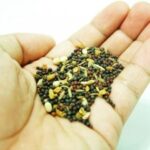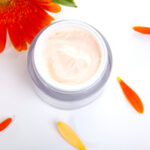Well, lets start from the beginning- most of us have probably heard of the latest craze “raw foodism”, so let me explain what it is first:
Raw foodism is a movement promoting the consumption of uncooked, unprocessed, and often organic foods, as a large percentage of the diet. A raw food diet consists fully of foods which have not been heated above a certain temperature. The maximum temperature varies among the different forms of the diet, from 92ºF to 118°F (33°C to 48°C). Raw food diets may include a selectýon of raw fruits, vegetables, nuts, seeds (including whole grains), eggs, fish, meat and unpasteurized dairy products (such as raw milk, cheese and yogurt).A raw foodist is a person who consumes primarily raw food, or all raw food, depending on how strict the person is. Raw foodists typically believe that the greater the percentage of raw food in the diet, the greater the health benefits. They generally believe raw food prevents and/or heals many forms of sickness and many chronic diseases. Freezing food is considered acceptable by many raw foodists; some choose to preserve nuts and seeds in a freezer.
So, you are probably asking, is this good for me?
Consuming raw foods has its pluses and minuses. Depending upon the type of food you are talking about, you may be getting the maximum nutritional benefits, but also risking your food safety. What is good for you is vitamin and minerals that can reduce when food such as vegetables and fruits are cooked, however even when vegetables and fruits are cooked they still have vitamins and minerals we need.
What about my skin?
To promote healthy skin doctors recommend getting enough sleep (8 hours), reducing stress, using a mild soap, avoiding the sun, and…. Getting the proper amount of vitamins and minerals (which is where raw food comes in). The jury is still out on raw food, but in my opinion as long as you are getting the vitamins you need (I suggest you enjoy at least 5 servings of fruits and vegetables per day- raw or cooked. And I, unlike raw foodists, do not advocate eating raw meat!) there is no need to have a “raw diet”. However, if you are interested in a raw diet please read below, which will help you safely create a raw diet for yourself.
To preserve as many of the vitamins and minerals as we can, the following tips were recommended in the book `The Essential Guide to Vitamins & Minerals` by E. Somer, M.A., R.D.:
·. Even small fluctuations in temperature can result in considerable loss of vitamin C in frozen foods.
·.
ALL raw foods have microorganisms that may cause disease (such as salmonella), given the right conditions. If handled properly, the foods are safe (and nutritious) to eat. Here are some suggestions for proper food handling that are detailed in `The Nutrition Bible` by Anderson and Deskins:
·(until yolks are set) before eating (and this includes whole eggs, yolks or whites used for frostings, puddings, mousses, ice creams, sauces and salad dressings). Use within a month.
· Fish & Shellfish – illnesses from eating raw fishes range from viral intestinal infections to hepatitis to worms and parasites. 85% of these illnesses can be traced to eating raw shellfish (clams, mussels, oysters and scallops). Eat no seafood that hasn`t been thoroughly cooked. All seafood should be gotten home quickly, unwrapped, placed on a clean plate and rewrapped – loosely- with plastic wrap. Cook or freeze fish and shellfish within 24 to 36 hours.
· Meats & Poultry – As with seafood, rush home from the store, unwrap at once, place on a clean plate, cover loosely with plastic food wrap and store in the coldest part of the refrigerator. Cook or freeze within 2 days. Ground meats are the most perishable of all and have the most potentially harmful bugs. Before freezing, shape into patties, wrap snugly, and date. Before cooking, rinse poultry well under cool water (inside and out). Blot red meats dry with paper toweling, then discard the toweling. Cook all meat and poultry thoroughly before eating .
· Raw milk – is not nutritionally superior to pasteurized milk, and from a bacterial standpoint it is definitely inferior. In fact, it is so risky some areas ban its sale.
· Fruits & Vegetables – unbundle any bundled or banded vegetables, discard any soft or decaying pieces, then pop the rest into fresh plastic storage bags. Berries will also last longer if removed from their cartons and placed in a bowl. All vegetables should be unwrapped, then transferred to pristine storage bags. Before serving or cooking, wash all fruits and vegetables carefully in several rinses of tepid water, then peel, if necessary.
The FDA (Food and Drug Administration) adds these suggestions for raw fruit and vegetable safety:
· Wash produce in water. Use a scrub brush. Rinse thoroughly.
·).
· Cut rinds off of melons or scrub the outside of your melon. Melon skins can be washed with a diluted chlorine bleach solution. According to the Ohio Cooperative Extension Service, mix one teaspoon of bleach (regular bleach with no scent) in a gallon of water. Rinse thoroughly. The quantity of bleach used should not exceed one Tablespoon of bleach per gallon of water. For more detailed information, try their website (listed below).
· Peel waxed fruit and vegetables (waxes can seal in pesticide residues).
· Peel vegetables such as carrots (this will remove pesticides that remain in or on the peel).
·.
· Do not store vegetables below meat in the refrigerator. The raw meat drippings may fall on them and cause contamination.
· Keep your refrigerator produce drawer clean and sanitized.




